Play landscape be-MINE, Beringen
The team of Carve and Omgeving (design) and Krinkels (contractor) won the international competition to design an adventurous play-scape and landmark on a ‘terril’ in Beringen, Belgium, in January 2015.
̈The Adventure Mountain ̈ is part of the touristic, recreative project be-MINE, that aims to breathe new life into the monumental coalmining site in Beringen, the largest industrial-archaeological site in Flanders. The former mining city asked to add a new function to the 60 meter high rubble mountain, and to redevelop the old industrial buildings into a cultural hotspot where its history can be experienced in a playful way.
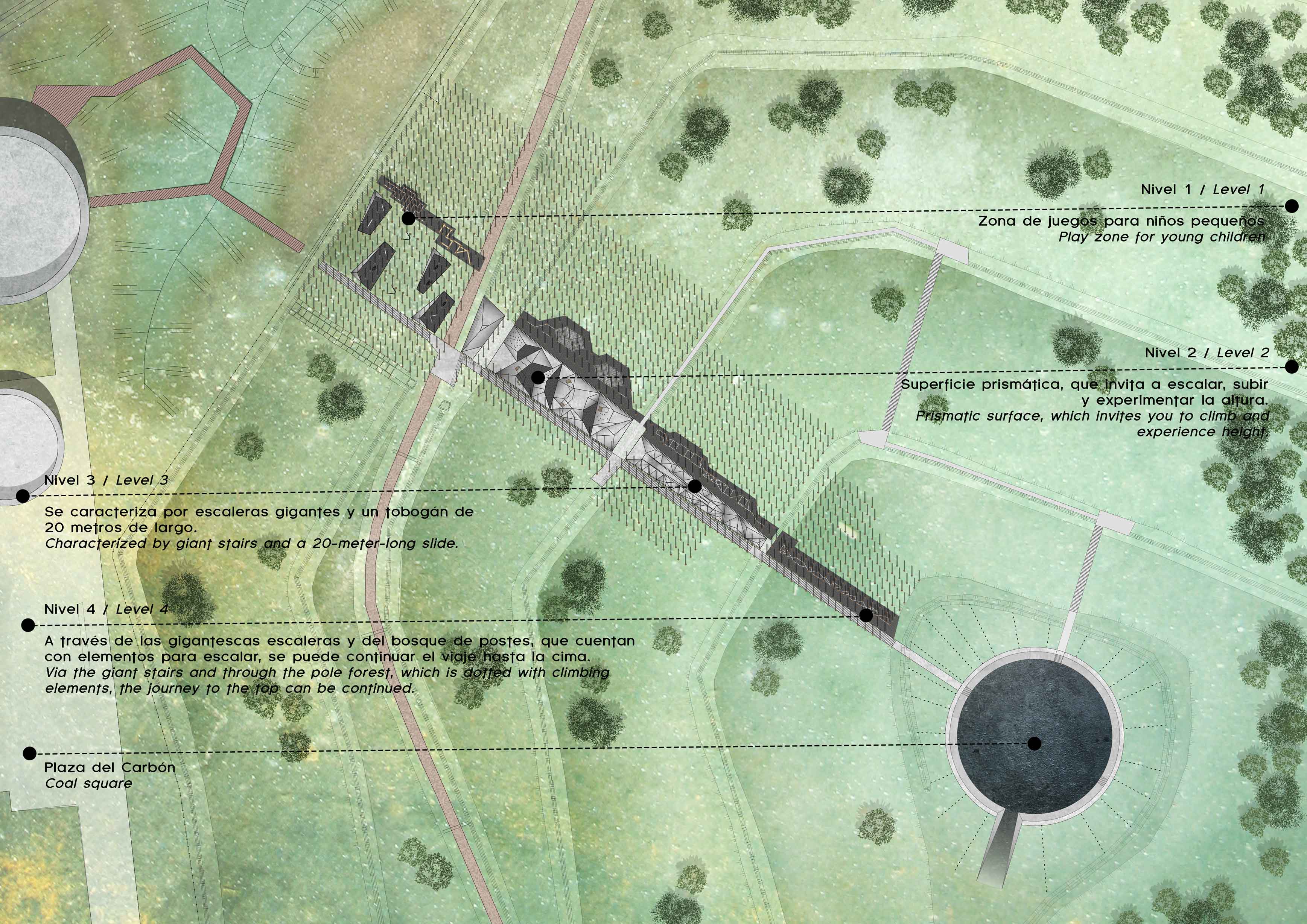
Master plan
Plan: Carve Landscape Architecture y OMGEVING Landscape Architecture
The intervention is a landmark on a large scale, but through its playable character it also reflects the small scale of a child. The values of the industrial heritage have been a continuous leading theme in the design process that resulted in an unprecedented playscape. The mining ‘terril’ has been given a new meaning, rooted in both the past and the future.
The design consists of three parts, that create a unity with the mountain and its past: a pole forest as a landmark, an adventurous prismatic play surface on the flank of the mountain and a coal square on the top of the ‘terril’. The spine of the ensemble is a straight stair that provides access
to all levels. At night, a light line along the stairs makes the topography of the terril visible.
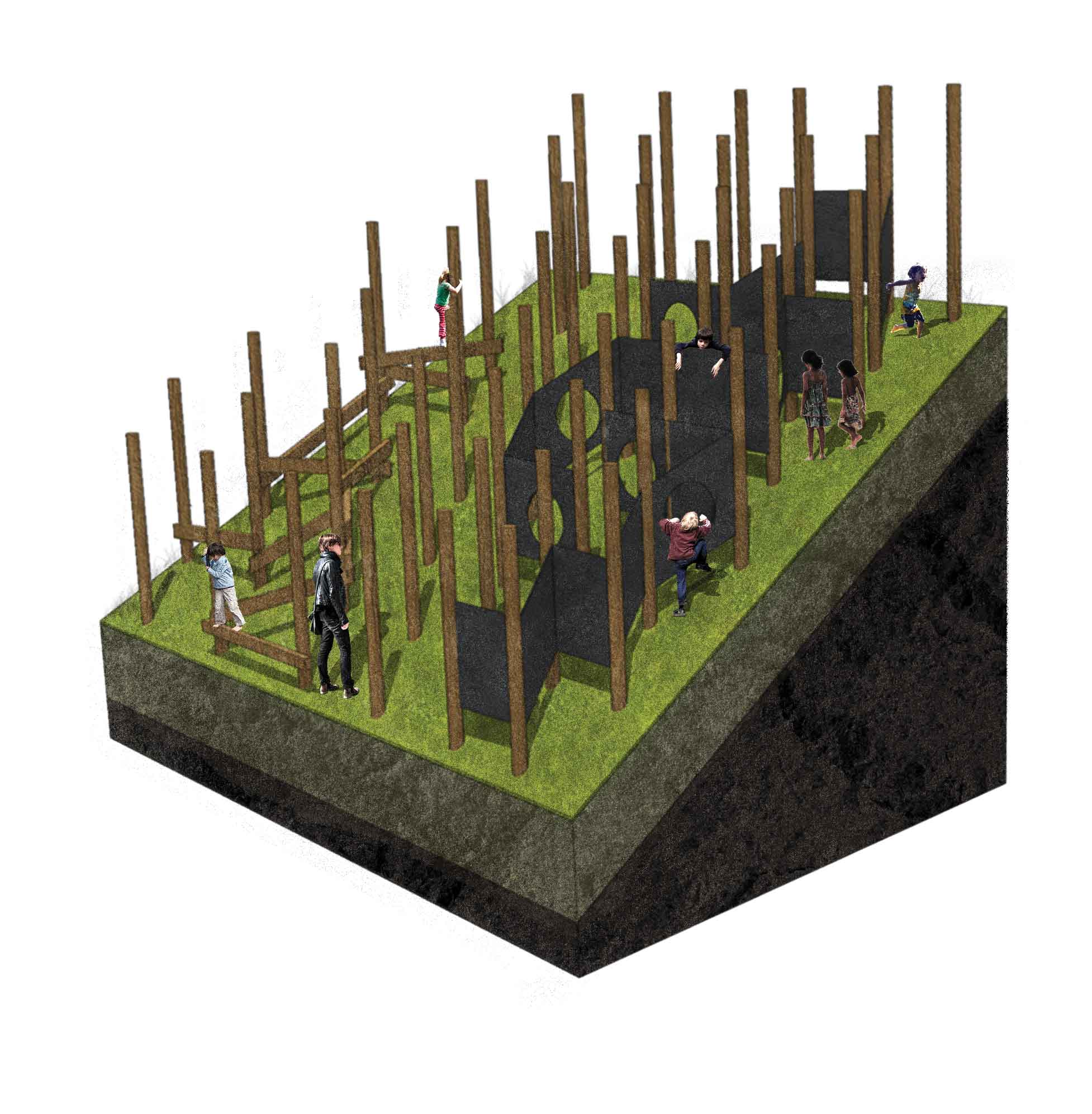
Isometric projection of the pole forest
Renders: Carve Landscape Architecture y OMGEVING Landscape Architecture
The topography of the landscape has regained structure and is made visible by a pole forest: 1.600 timber poles are anchored in the northern flank of the terril, from top to bottom. The rounded poles refer to the mining past; they were used for supporting the kilometres long underground mining shafts.
It is a strong spatial gesture and an intervention that relates to the scale of the hill and the industrial heritage on this location.
“The spectacular scale of this site, regarding both the height of the terril as well as its industrial heritage, is unique in the relatively flat surrounding landscape of Limburgian-Flanders.”
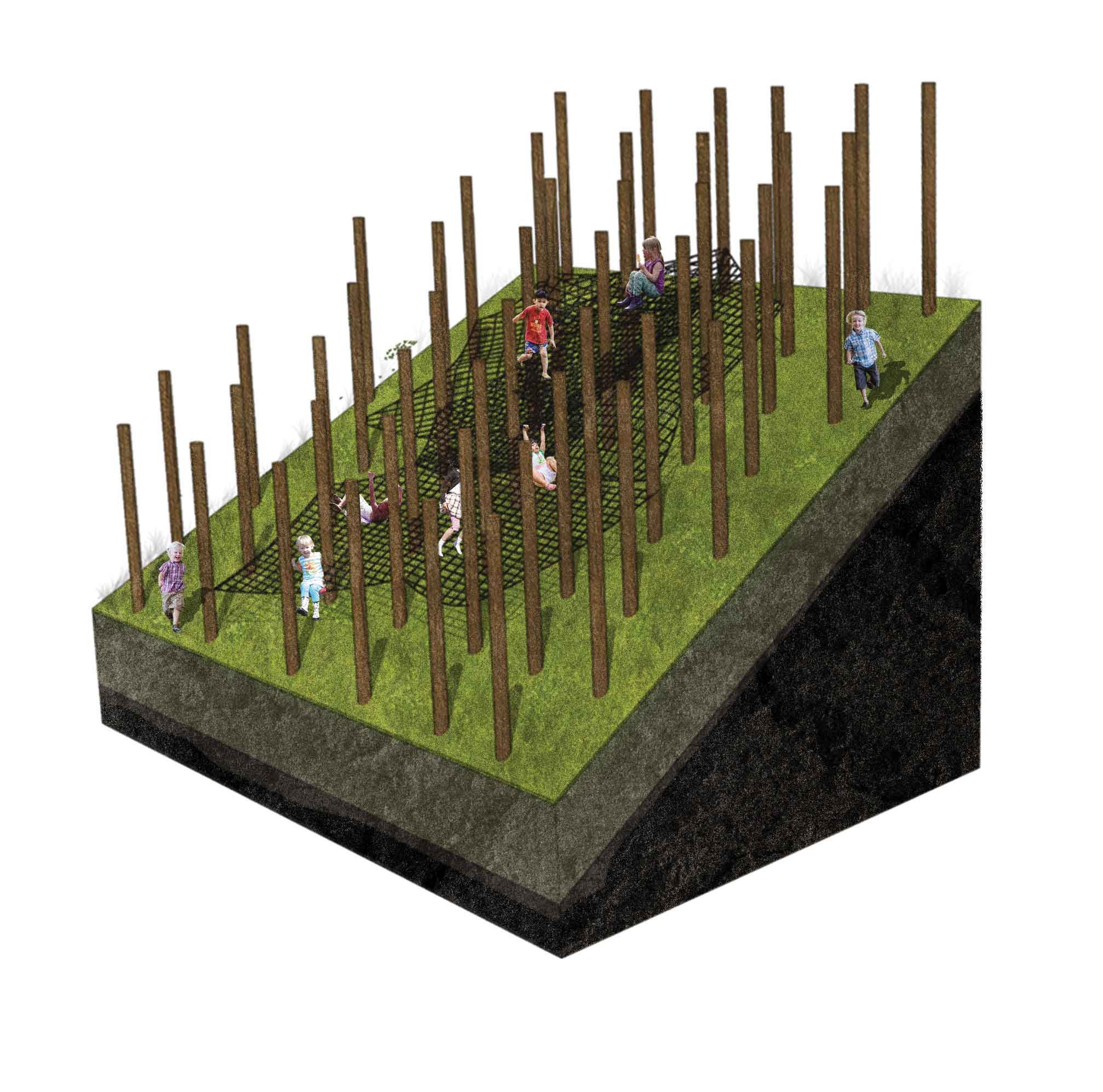
Isometric projection of the pole forest
Renders: Carve Landscape Architecture y OMGEVING Landscape Architecture
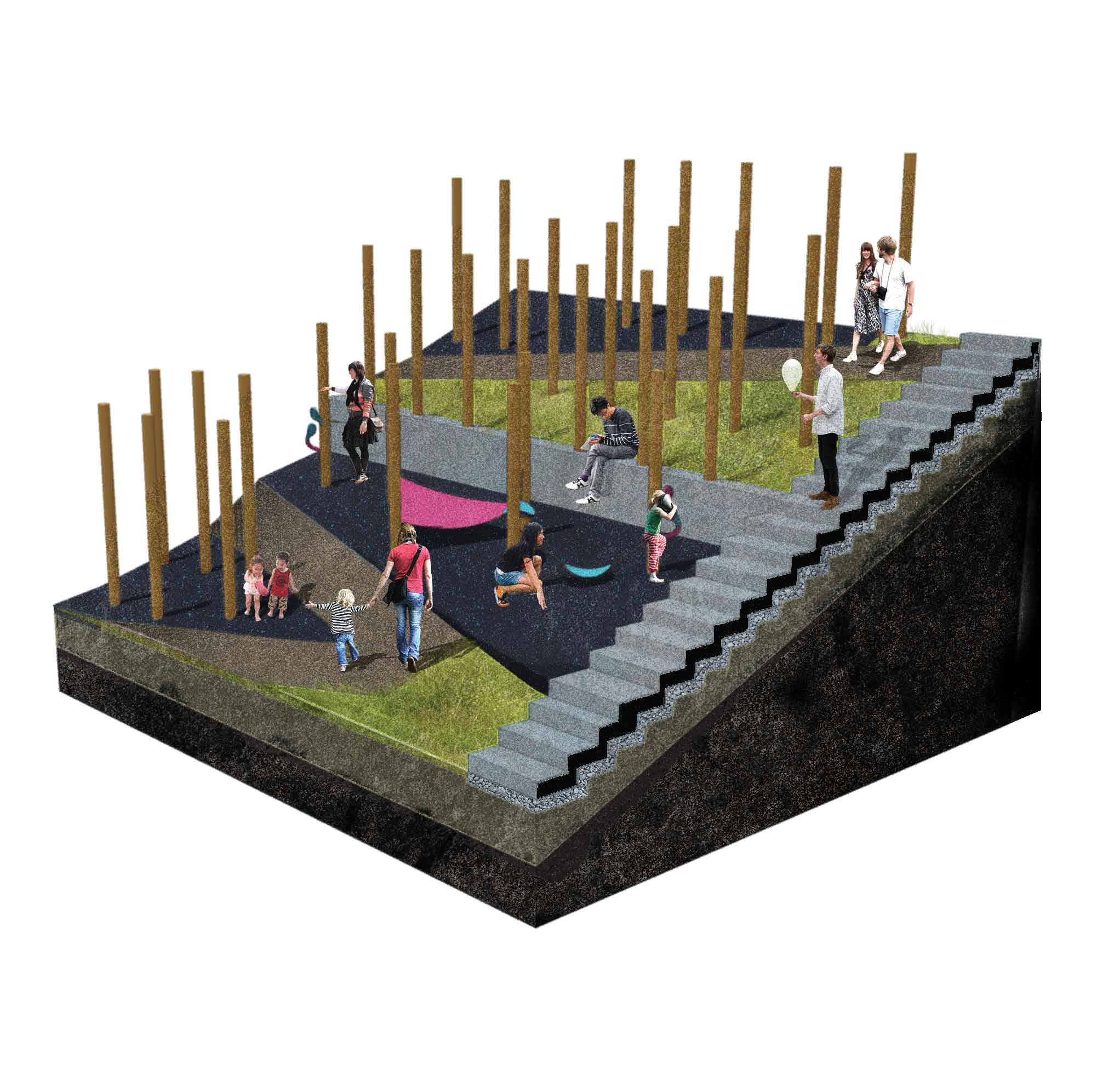
Isometric projection of the pole forest
Renders: Carve Landscape Architecture y OMGEVING Landscape Architecture
A part between the poles has been dedicated to an adventurous play course with balancing beams, climbing nets, hammocks, a labyrinth and a rope course. The poles are placed in a grid, which results in an interesting perspective effect: the sightlines create an experience that reminds of the dark mining shafts of the past.
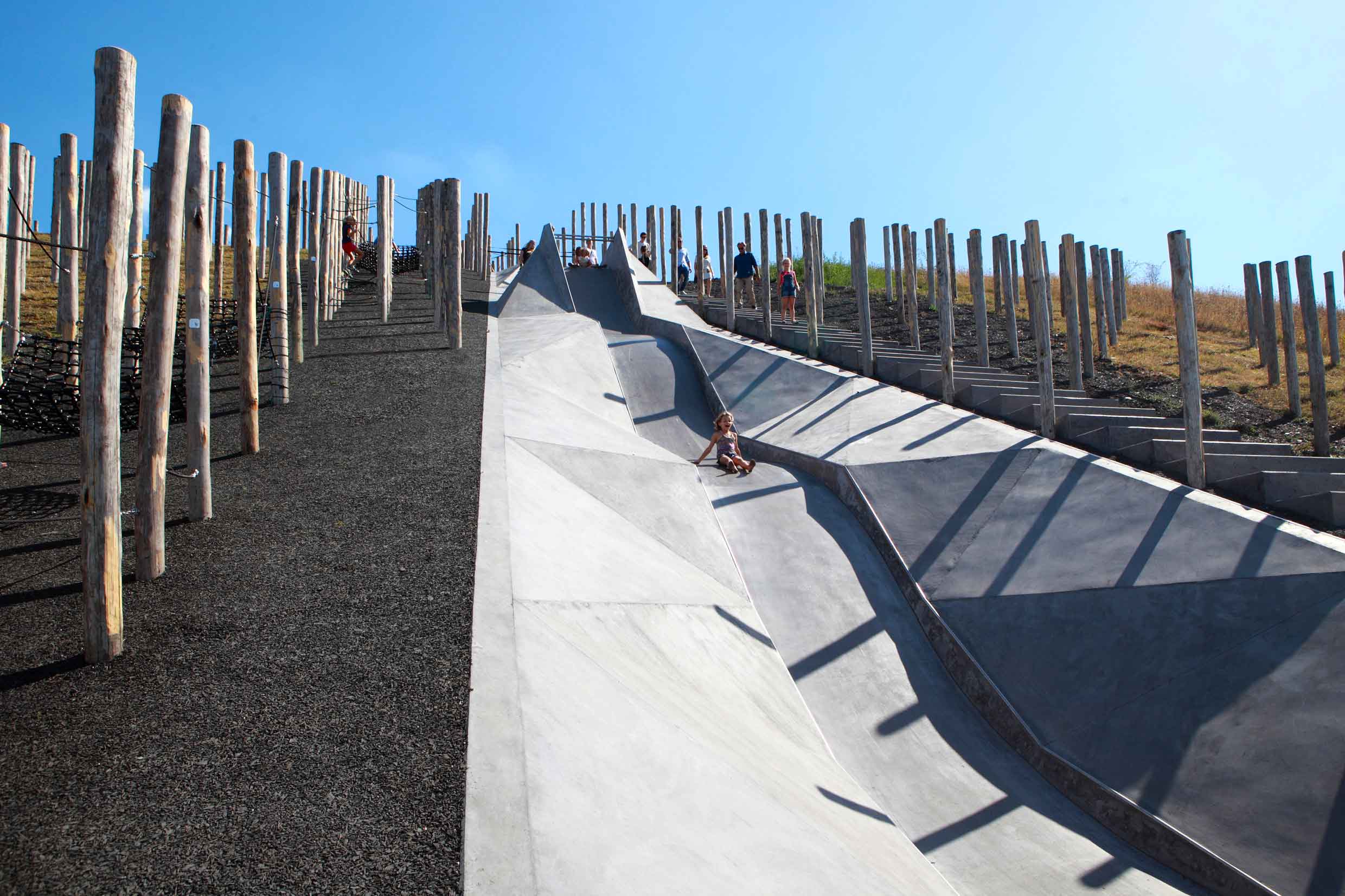
Highlight, the slide
Photography: Benoit Meeus
Wedged in between the pole forest lies a large, prismatically shaped play surface. It has been ‘draped’ over the terril, following its heightlines, a gesture that is visible from afar. The surface is a challenging object, that narrows down to the top and ‘crumbles’ at the foot of the hill.
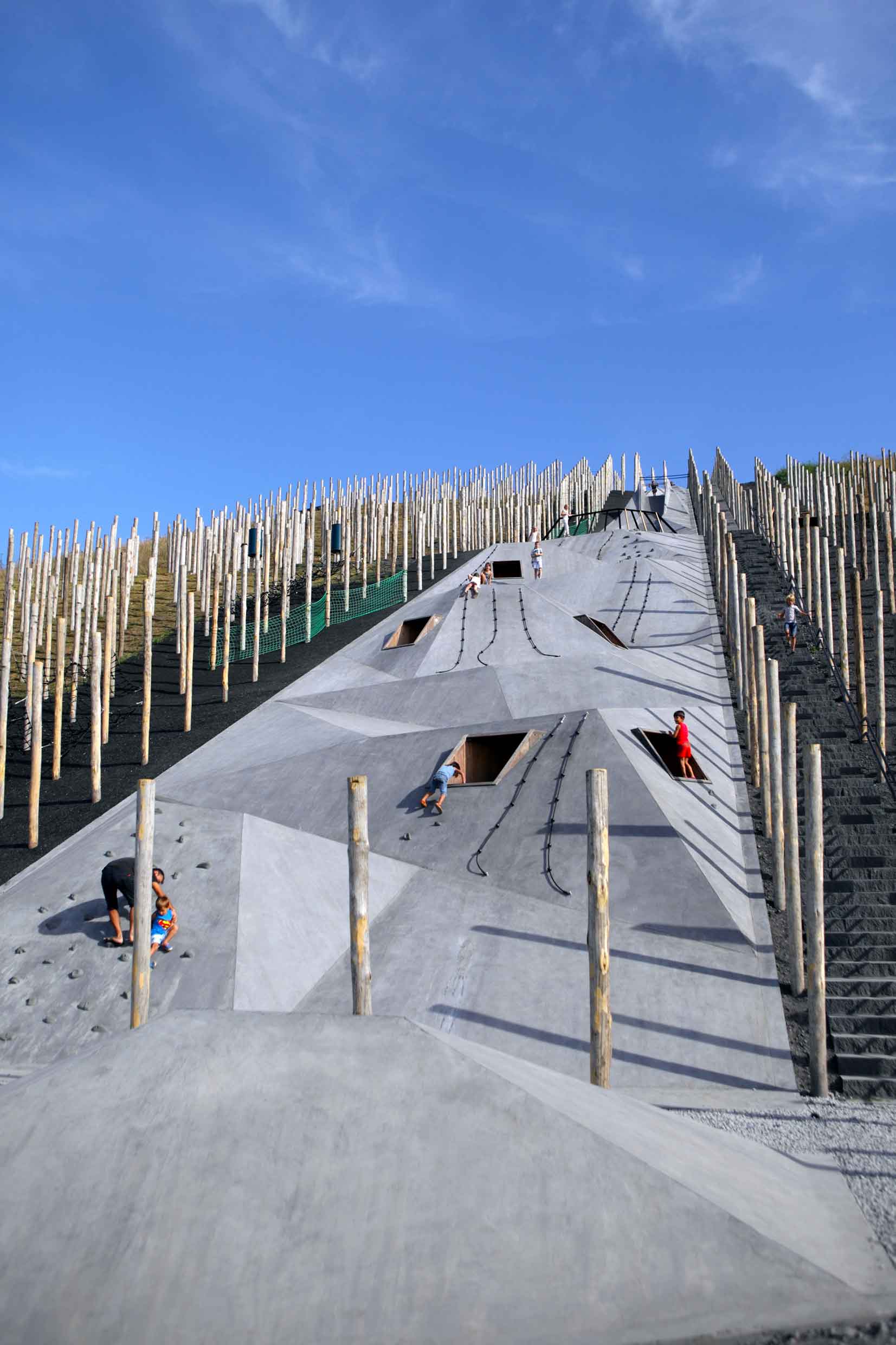
Shaped play surface
Photography: Benoit Meeus
This tectonic landscape offers space to an endless variation of play options, and is scattered with crawling tunnels, climbing surfaces with climbing grips and ‘giant stairs’. Its spectacular highlight is the more than twenty meters long slide, which is placed halfway up the hill and is integrated within the relief of the concrete play surface. The various prismatic surfaces invite children to climb, slide, hide and discover. The surface consists of sloped, horizontal and vertical crossings, inspired by the underground mining shafts.
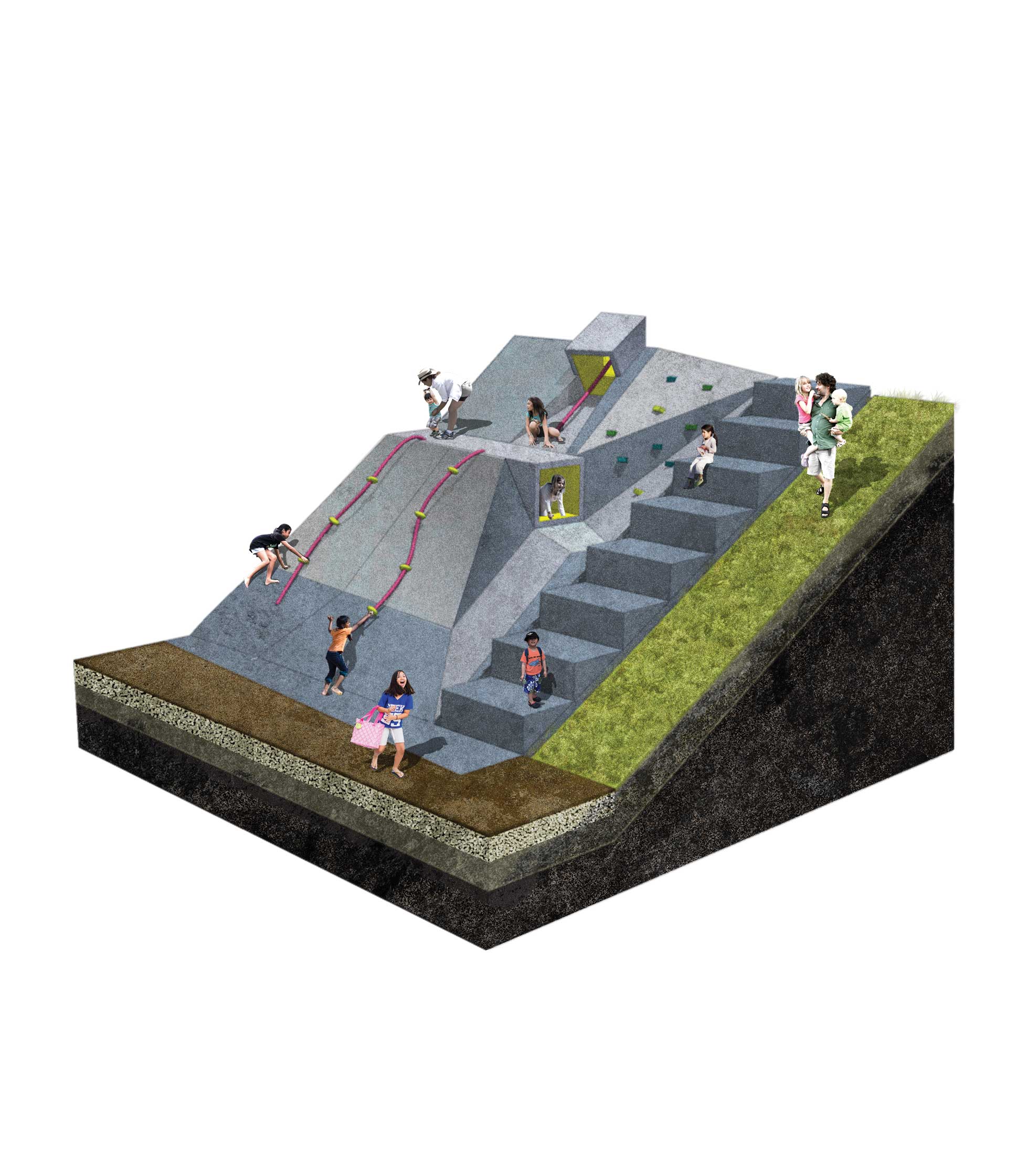
Proyección isométrica de la superficie prismática
Renders: Carve Landscape Architecture y OMGEVING Landscape Architecture
All integrated play elements in both the pole forest and the prismatic play surface have one thing in common: they challenge children physically, to play together and use their motor skills. The sensation of an increasing height and difficulty level of the ‘course’ – the higher you climb, the more difficult it gets – asks for collaboration and mutual encouragement, until one reaches the top. Cooperation and stimulation are therefore intrinsically connected with the play experience, as an immaterial reference to the hard-physical work of the old mine-workers, who had to trust one another unconditionally.
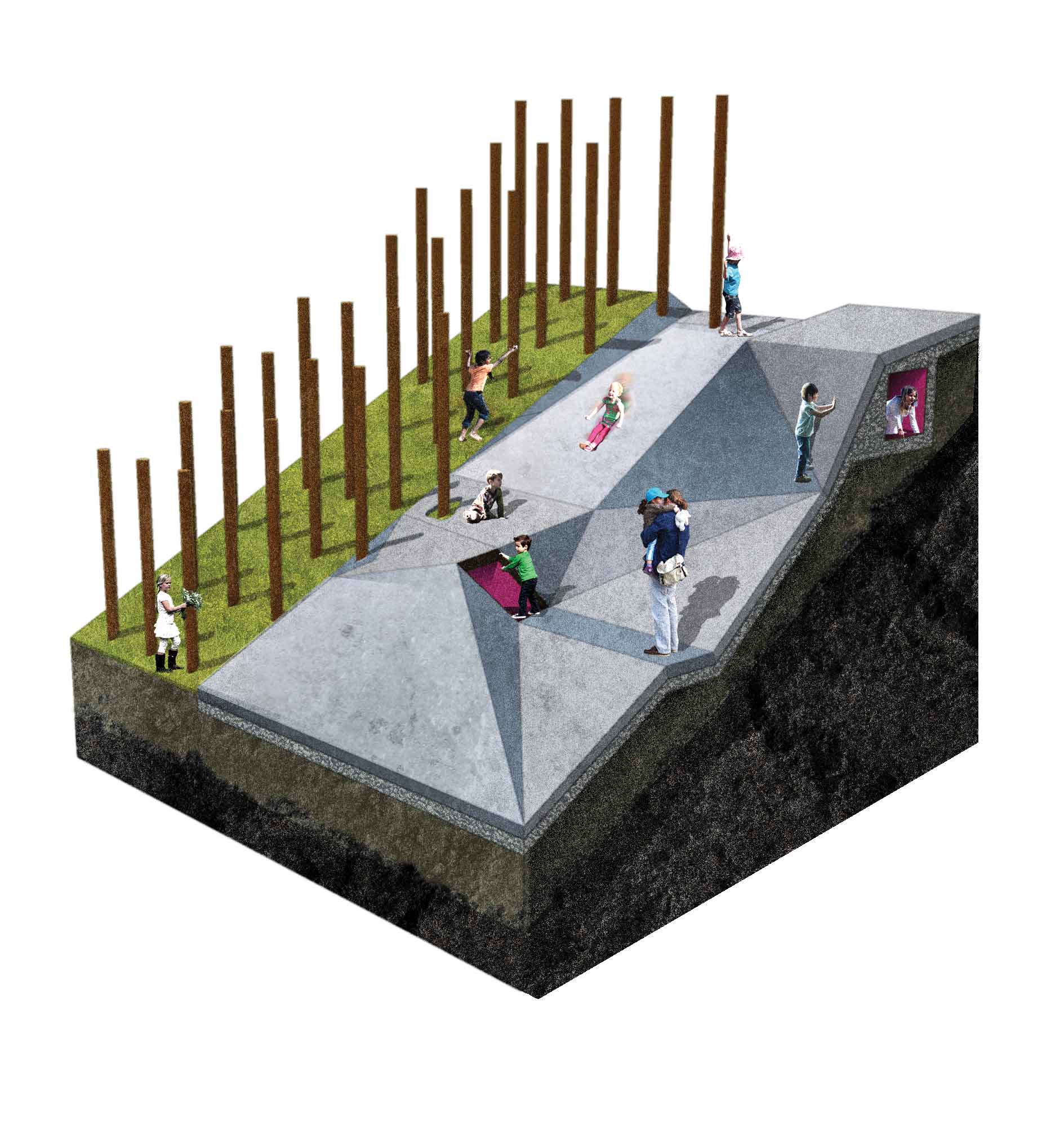
Isometric projection of the prismatic play surface
Renders: Carve Landscape Architecture y OMGEVING Landscape Architecture
On top of the terril, at sixty meter height, a ‘Coal Square’ was created that ref lects both the past as the present character of the terril. The square is sunken and visualises the presence of the ‘black gold’. Its sunken position provides shelter from the strong winds at the top of the hill.
In the middle of the square the horizon will not be visible anymore, directing full attention to the clouds above. The sloped edges of the Coal Square can be used for seating and contain historic information on the site and the surrounding mining landscape. Visitors can take a stroll on the raised talud and enjoy the panoramic views on the surrounding Limburg mining landscape.
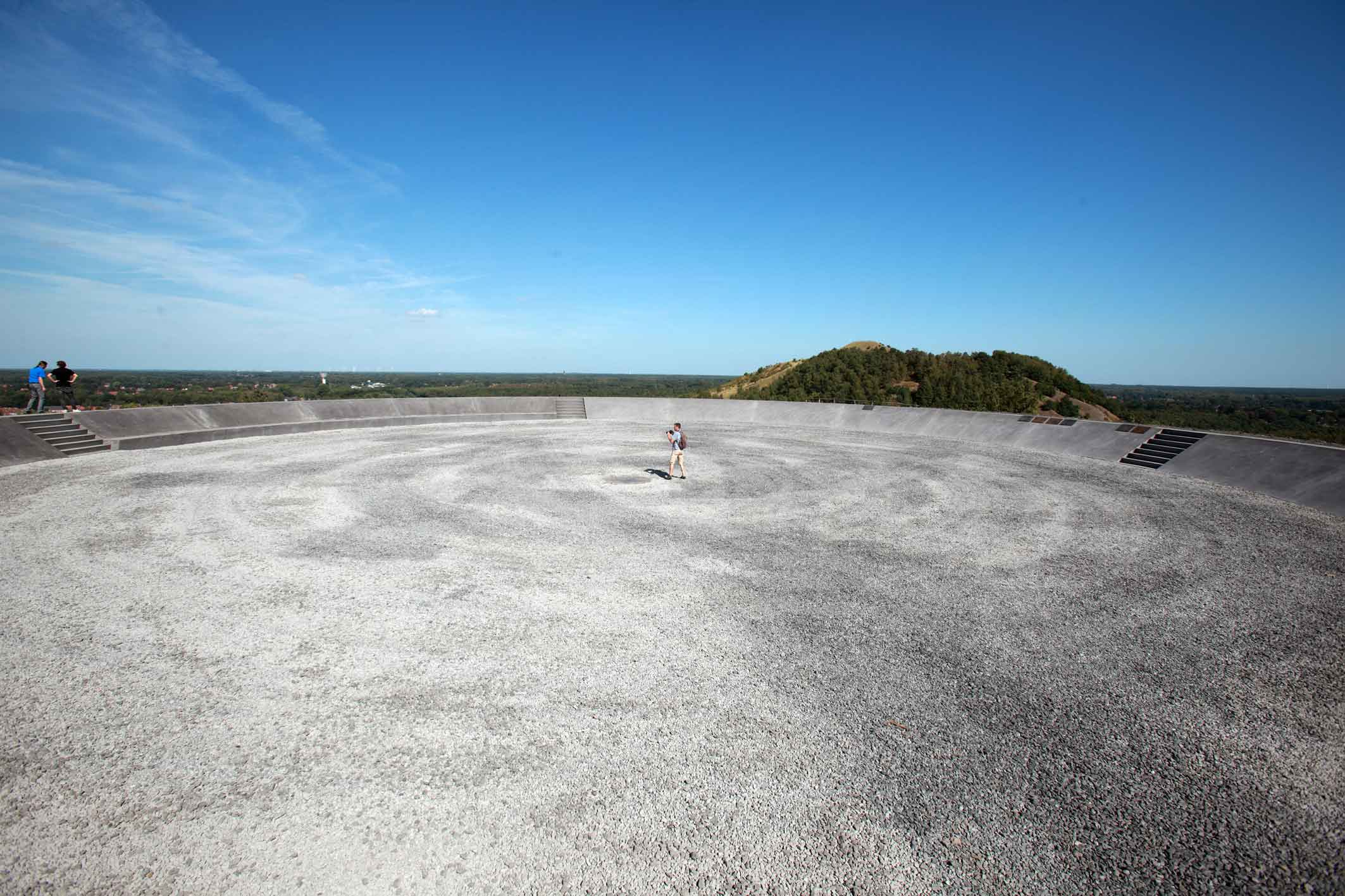
Coal Square
Photography: Benoit Meeus
“The Coal Square, with a 360° panoramic view on the industrial heritage and the surrounding landscape, is a well earned reward for the challenging playing and climbing efforts.”
Together, the pole forest, the prismatic play surface and the Coal Square create a unique addition to the Masterplan Adventure Mountain, drawn by Antea Group, and are a valuable contribution to the transition of Flanders’ largest industrial heritage towards a touristic, recreative project.
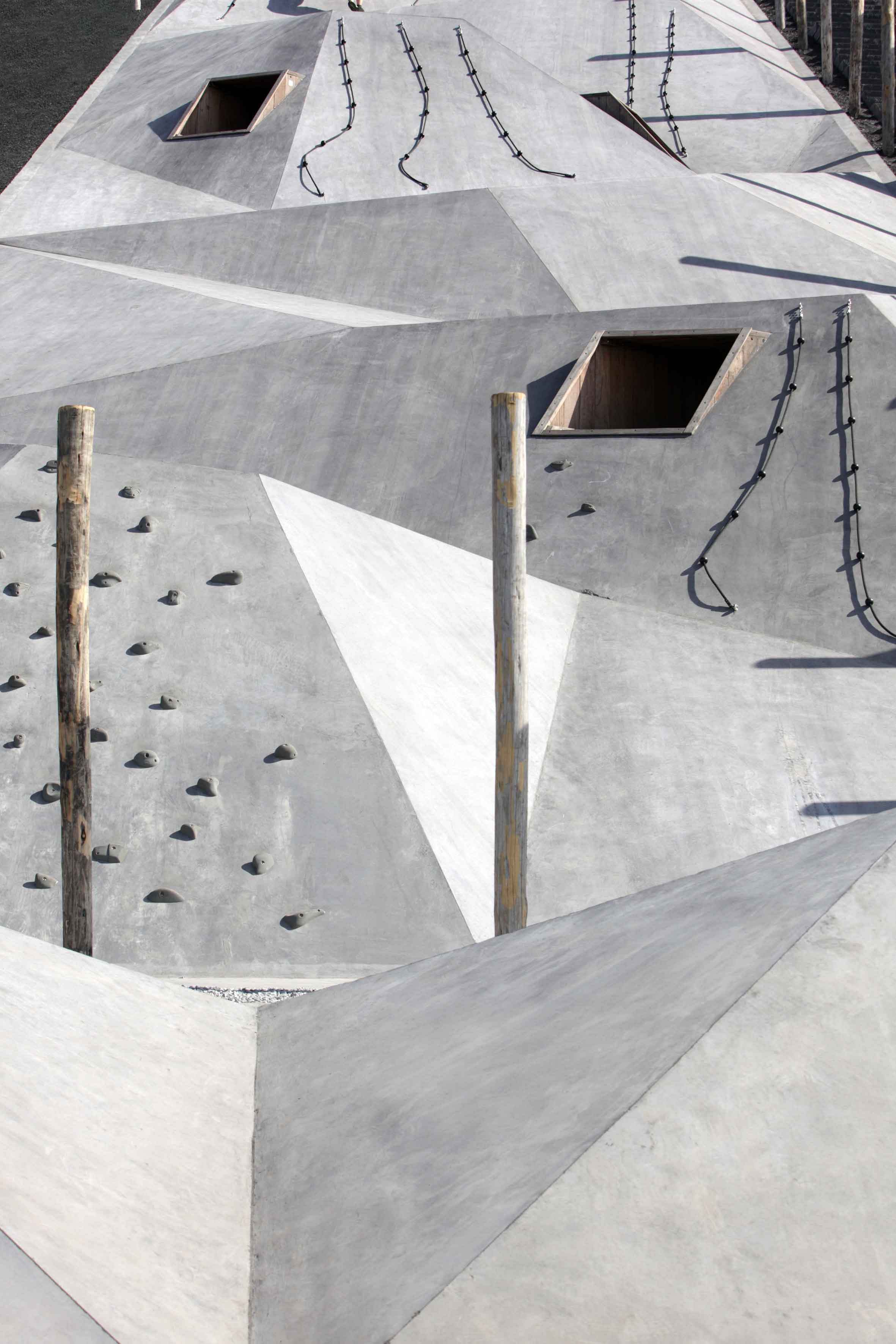
Climbing area Photography: Benoit Meeus








